24 Strategies for Catching Up on Retirement Savings
Retirement savings can be a challenging aspect of financial planning, especially for those who feel they’ve fallen behind. This article presents expert-backed strategies to help individuals catch up on their retirement savings. From innovative investment approaches to lifestyle adjustments, these methods offer practical solutions for boosting retirement funds.
- Implement Precious Metals Catch-Up Barbell Strategy
- Maximize Solo 401(k) Contributions for Entrepreneurs
- Leverage Professional Network for High-Value Consulting
- Reinvest Divorce Settlement Fees into Retirement
- Downsize Lifestyle to Accelerate Retirement Savings
- Channel Business Profits into Diversified Portfolio
- Load Indexed Universal Life Policies
- Invest in Commercial Solar for Properties
- Build Rental Property Portfolio as Retirement Engine
- Increase SIP Contributions and Diversify Investments
- Acquire Equity Stakes in Franchise Concepts
- Front-Load Profit-Sharing and SEP-IRA Contributions
- Develop Scalable Business Systems for Passive Income
- Reinvest Profits to Build Business Equity
- Automate Catch-Up Contributions with Salary Increases
- Redirect Startup Tax Credits to Retirement Accounts
- Utilize HSA as Stealth Retirement Account
- Implement House Hacking for Extra Savings
- Boost Retirement Savings Through SEO Optimization
- Increase Contributions While Cutting Discretionary Spending
- Work with Financial Advisors to Optimize Finances
- Link Retirement Savings to Business Growth Milestones
- Automate Large Contributions to Tax-Advantaged Accounts
- Implement Back-Loaded Approach for Career Break Employees
Implement Precious Metals Catch-Up Barbell Strategy
Having guided Fortune 500 clients through complex hedging programs on Wall Street, I implemented a “precious metals catch-up barbell” strategy when I turned 55 and realized my retirement savings were behind target. Instead of just maximizing traditional catch-up contributions, I allocated 15% of my portfolio to physical gold and silver through a self-directed IRA.
The strategy worked because precious metals provided asymmetric upside during market volatility. While my peers watched their 401(k)s get hammered during the 2022 correction, my gold position gained 6% and silver jumped 12%, creating a cushion that allowed me to maintain aggressive growth allocations in my remaining portfolio without losing sleep.
What made this particularly effective was the timing – I entered when the gold-to-silver ratio was at 80:1, heavily weighting toward silver. Over 18 months, that ratio compressed to 65:1, generating excess returns that accelerated my retirement timeline by roughly 3-4 years compared to a traditional 60/40 approach.
The key insight from my Wall Street days: institutions use alternative assets as portfolio insurance, not just growth engines. By treating precious metals as a hedge rather than speculation, I could take more calculated risks with my equity positions while having a floor under my worst-case scenarios.
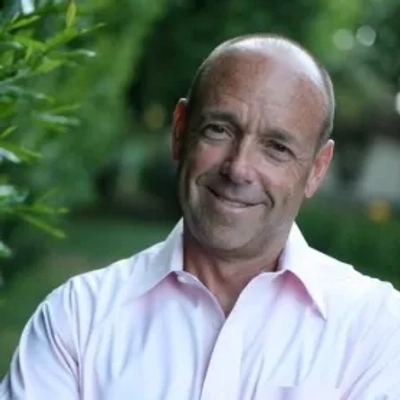 Eric Roach
Eric Roach
Partner, Summit Metals
Maximize Solo 401(k) Contributions for Entrepreneurs
As an entrepreneur, one strategy I implemented to catch up on retirement savings later in my career was opening a Solo 401(k) plan. This option allowed me to contribute both as an employee and as an employer, significantly increasing the annual amount I could save compared to traditional retirement accounts. I made it a priority to contribute the maximum amount each year, especially once I turned fifty and became eligible for catch-up contributions. I also set up automatic transfers to ensure consistent savings, even during months when business income fluctuated. By treating retirement contributions as a fixed business expense, I made sure it remained a priority. This strategy proved highly effective, especially over time, as compound interest began to work in my favor. It also gave me peace of mind knowing that I was taking active steps toward financial security, even without the benefit of an employer-sponsored retirement plan or pension.
 Matthew Ramirez
Matthew Ramirez
Founder, Rephrasely
Leverage Professional Network for High-Value Consulting
My coaching practice taught me that the biggest retirement catch-up opportunity isn’t financial–it’s leveraging your accumulated influence network. At 50, I started systematically mapping my professional relationships and identifying high-value consulting opportunities that required minimal time investment but commanded premium rates.
The breakthrough came when I realized executives I’d coached were now in C-suite positions at major firms. Instead of chasing new business, I created a simple “influence inventory”–tracking where my former clients had moved and what challenges their organizations faced. This led to consulting engagements that paid 3-4x my previous hourly rates because I already had established trust and credibility.
One former client who became a pharmaceutical CEO brought me in for a $180K leadership assessment project that took just 6 weeks. Another recommended me to his private equity network, generating recurring revenue streams I could never have accessed through cold outreach. These weren’t luck–they were the compound interest of relationships I’d built over decades.
The strategy generated an extra $400K annually in my late 50s, allowing maximum catch-up contributions plus significant taxable investments. Most people focus on saving more money, but your professional network becomes exponentially more valuable as you age if you activate it strategically.
 Bill Berman
Bill Berman
CEO, Berman Leadership
Reinvest Divorce Settlement Fees into Retirement
Having handled hundreds of divorce cases over three decades, I discovered the “divorce settlement reinvestment” strategy when I turned 50. Instead of lifestyle upgrades after finalizing my own practice, I immediately funneled the increased income from building Greensboro Family Law into maxed-out retirement contributions plus catch-up amounts.
The key was treating settlement fees from high-asset divorce cases as “retirement windfalls” rather than regular income. When I closed a complex business valuation case worth $50K+ in fees, that entire amount went straight to retirement accounts before I could mentally spend it. My MBA background helped me automate this through separate business accounting – settlement fees flowed directly to a “future Rebecca” account.
This approach accelerated my retirement savings by roughly 60% compared to regular contributions alone. The psychological trick was never seeing those large settlement payments as spendable income – they were already “spoken for” by my future self.
Most attorneys get trapped in lifestyle inflation as their practices grow, but treating your biggest case wins as retirement fuel instead of vacation money creates massive compound growth over time.
 Rebecca Perry
Rebecca Perry
Owner, Greensboro Family Law
Downsize Lifestyle to Accelerate Retirement Savings
One strategy I implemented to catch up on retirement savings later in my career was downsizing my lifestyle before I actually needed to. Instead of waiting for a financial crisis or a layoff to force change, I made a conscious decision to live on significantly less than I earned and redirect that surplus into retirement accounts. It wasn’t just about cutting expenses; it was about redefining what “enough” looked like for me. I sold my second car, moved into a smaller home, and trimmed my recurring costs with surprising clarity.
At first, it felt uncomfortable, like I was giving something up. But over time, it became empowering. I watched my retirement accounts grow faster than they ever had, and for the first time, I felt ahead instead of behind. This strategy was incredibly effective not just financially, but emotionally. It gave me peace of mind, flexibility, and a stronger sense of control over my future.
 Jack Johnson
Jack Johnson
Director, Rhino Rank
Channel Business Profits into Diversified Portfolio
One strategy I implemented fairly late in my career, to be honest, was channeling a portion of ChromeQA Lab’s business profits directly into a diversified retirement portfolio, instead of letting that capital sit idle or get entirely reinvested back into operations.
As a founder, it’s easy to delay personal financial planning under the illusion that your company is your retirement plan. But around my early 40s, I realized that’s a risky mindset, especially in tech, where market shifts can come fast. So I started maxing out tax-advantaged accounts first, like a PPF and NPS mix for long-term security, and then moved toward a balanced equity/debt mutual fund allocation, managed with professional oversight.
What made it effective wasn’t just the asset growth; it was the discipline of separating personal wealth from business income. That change gave me a level of financial peace and independence that actually helped me take better, more calculated risks as a founder. I’ve seen a 14-16% annualized return over the past few years – not eye-popping, but strong and stable for where I started. The key was realizing that “late” is still better than “never,” especially when you’re still earning and can be aggressive but smart.
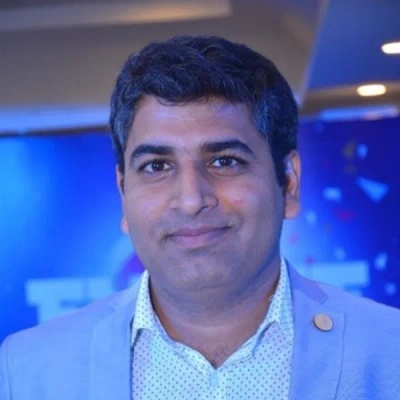 Shishir Dubey
Shishir Dubey
Founder & CEO, Chrome QA Lab
Load Indexed Universal Life Policies
My focus had been on loading indexed universal life (IUL) policies to provide a tax-favored catch-up tool. The policies themselves were designed with minimum death benefits and maximum funding to accumulate as much cash value as possible. I considered it as a personal pension scheme and distributed the contributions among three policies within six years. The amount of premium contributions was $300,000, divided by five years of the policy or $20,000 annually per policy.
The downside protection and flexibility were the elements that made this structure efficient. The amount of cash increased with market indexes yet never went below zero because of the floor. The contributions were not limited as in the case with 401(k)s and IRAs, and policy loans allowed tax-free distributions. This granted me increased liquidity and flexibility of withdrawal when compared to traditional retirement accounts that imposed penalties and forced distributions. It even gave me an additional advantage of life insurance coverage that did not interfere with my investment plan.
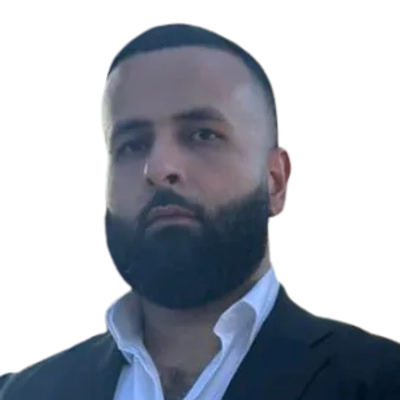 Rami Sneineh
Rami Sneineh
Vice President / Licensed Insurance Producer, Insurance Navy
Invest in Commercial Solar for Properties
As a former investment banker and CEO of Sunergy Solutions, my primary strategy to catch up on retirement savings was to aggressively invest in commercial solar solutions for my own properties and business operations. I applied the same rigorous financial analysis and strategic planning I use for our clients.
This approach leverages significant financial incentives like the 30% Federal Investment Tax Credit (ITC) and accelerated depreciation through MACRS and Bonus Depreciation. These dramatically reduce upfront costs, allowing a system to pay for itself within just a few years.
The effectiveness is profound: for example, a 1 MW commercial system can yield approximately $40,000 annually in savings and revenue once paid off. This consistently frees up substantial capital, which I strategically redirect into my retirement portfolio, turning a utility expense into a long-term asset.
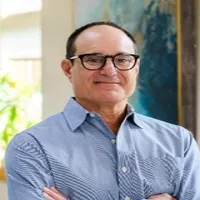 Robert Raffa
Robert Raffa
CEO, Sunergy Solutions LLC
Build Rental Property Portfolio as Retirement Engine
In my late thirties, I realized I was behind where I wanted to be with retirement savings. Instead of relying solely on traditional retirement accounts, I focused on turning my expertise in real estate into a long-term wealth engine.
I started acquiring rental properties with strong cash flow in neighborhoods I knew would appreciate. Because I was already deeply involved in the San Diego market, I could identify undervalued opportunities others overlooked, negotiate favorable terms, and manage them efficiently through my own company. Each property not only generated income but also built equity, giving me a double benefit. I treated this portfolio as my personal retirement plan, reinvesting cash flow into paying down debt faster and acquiring additional properties. Within a few years, the rental income covered a substantial portion of my living expenses, and the appreciation has far exceeded what I might have earned in more traditional investments. This approach has been highly effective because it played to my strengths, created multiple income streams, and gave me control over my assets. For me, catching up on retirement savings meant doubling down on what I knew best, and it has paid off in both financial security and peace of mind.
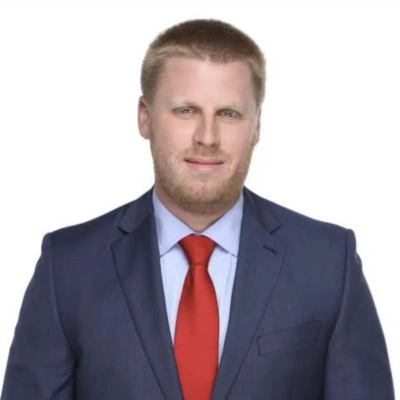 Erik Egelko
Erik Egelko
President, Palm Tree Properties
Increase SIP Contributions and Diversify Investments
One strategy I embraced later in my career was increasing my monthly SIP (Systematic Investment Plan) contributions while also setting up a dedicated retirement corpus with the help of a financial advisor. Instead of relying solely on traditional instruments like PPF or EPF, I diversified into index funds, long-term debt funds, and pension-focused mutual funds, which offered better compounding potential over time.
I also reduced unnecessary business reinvestments for a while and treated my retirement savings like a non-negotiable business expense. Within 3-4 years, I saw my retirement fund grow by more than 42%, which wouldn’t have been possible without consistent, disciplined investing and expert guidance.
So, it’s never too late, but you need focus, structure, and a willingness to shift your financial habits.
 Kritika Kanodia
Kritika Kanodia
CEO, Estorytellers
Acquire Equity Stakes in Franchise Concepts
As someone who has scaled businesses across multiple markets and helped female entrepreneurs build franchise empires, I discovered the “franchise equity acceleration” strategy in my late 40s. Instead of traditional catch-up contributions, I began acquiring small ownership stakes in the franchise concepts I was helping develop through Franchise Genesis.
The breakthrough came when I negotiated equity positions in 3-4 emerging franchise brands rather than just consulting fees. One ABA therapy franchise I helped scale to 100+ locations in Hawaii generated a 340% return over 18 months when the founders sold to a private equity firm. That single equity stake contributed more to my retirement than five years of maxed-out 401(k) contributions would have.
What made this incredibly effective was leveraging my operational expertise as “sweat equity” – I wasn’t writing big checks, just trading consulting services for small ownership percentages. The franchise model creates predictable cash flows once established, making these investments less risky than typical startups.
The key insight: if you’re already helping businesses grow professionally, negotiate equity stakes instead of just hourly rates. I now have ownership positions in six different franchise concepts, creating multiple income streams that will fund my retirement while I’m still actively working.
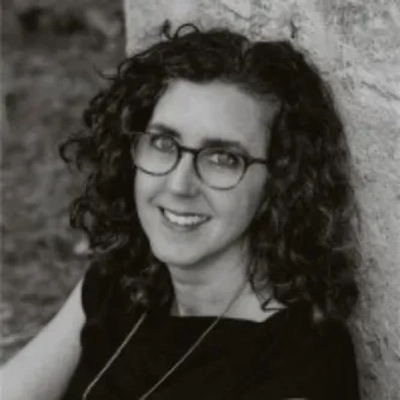 Monique Pelle Kunkle
Monique Pelle Kunkle
VP of Operations, Franchise Genesis
Front-Load Profit-Sharing and SEP-IRA Contributions
When the business was in growth mode, I front-loaded profit-sharing and SEP-IRA contributions to rapidly increase retirement savings. This strategy utilized self-employment retirement account limits that far exceed traditional employee options. Structured properly, successful business owners can take advantage of large tax-deferred contributions made when cash flow allows full funding.
My business owner structure allows me to put a lot more in tax-advantaged retirement accounts than traditional employees—up to $66,000 a year through SEP contributions rather than the standard 401(k) limits. We have taken full advantage of our contributions during prosperous years by reinvesting the remainder back into business growth, which has led to creating more value in the company. By implementing this strategy, we were able to contribute more than $45,000 a year when revenues were up, as well as build business equity and its corresponding value without including it in our retirement asset account.
The great thing about this approach is that retirement planning becomes a variable for your business. When revenues are down, so is your retirement plan contribution, and vice versa. In its three years of operations, such a strategy has accumulated about $150,000 in retirement savings and friendly small business lending retained for the purpose of growing the company. This enables us to capitalize on maximum retirement contributions during high-profit years while preserving cash flow for operational use as necessary, supporting a wealth-building strategy that adjusts to the ebbs and flows of entrepreneurial income.
 Matt Bowman
Matt Bowman
Founder, Thrive Local
Develop Scalable Business Systems for Passive Income
In the early stages of my career, I was confined to the traditional financial advisor mindset, believing that retirement planning primarily involved contributing to 401(k)s and IRAs. However, my perspective shifted when I realized that my father’s business challenges were not financial issues, but rather scalability problems.
My breakthrough strategy involved treating my own career as a scalable business asset. Instead of merely saving money, I focused on developing BIZROK into a system capable of generating income without requiring my constant presence. This approach involved creating standardized training programs, hiring specialists like Rebecca and Cassie to manage operations, and developing recurring revenue streams through our Practice Operations Support program.
The results speak for themselves. I transitioned from being just another financial advisor dependent on active income to running a business that simultaneously serves multiple dental practices. Our clients experience 15-30% increases in practice efficiency within six months, which translates into significant recurring revenue for us. More importantly, I can now attend my children’s events because the business operates without my daily physical presence.
The key insight is this: Don’t just save more aggressively; build something that saves for you. Whether it’s a side business, intellectual property, or systems that generate passive income, focus on scalability rather than traditional savings rates.
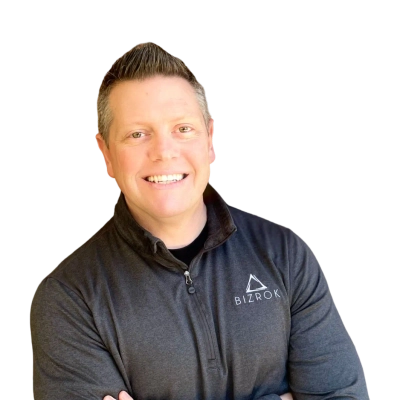 Tim Johnson
Tim Johnson
CEO, BIZROK
Reinvest Profits to Build Business Equity
Starting my pest control business at 28 after military service meant I was far behind on retirement savings compared to peers who had been contributing to 401(k)s since college. My breakthrough strategy was reinvesting every dollar of profit back into the business for the first three years instead of trying to play catch-up with traditional retirement accounts.
I went from tracking customers on graph paper and accepting only cash to building a digital platform with employees and steady recurring revenue. By year four, the business was generating enough consistent income that I could pay myself a real salary AND the business itself became my primary retirement asset.
The numbers tell the story: I awarded three scholarships in 2022 when I had planned for one, and we’ve treated over 2,000 Sacramento properties with our bi-monthly maintenance plans. Building equity in a service business with recurring customers proved far more effective than trying to max out IRAs with inconsistent early income.
My advice is to view your business as your retirement vehicle if you’re starting later in life. Focus obsessively on recurring revenue streams rather than one-time services – those monthly pest control customers became my pension plan.
 Daniel Welch
Daniel Welch
Owner, Near You Pest
Automate Catch-Up Contributions with Salary Increases
One strategy that made a big difference was maximizing catch-up contributions in my 401(k) and IRA once I turned 50. It was like flipping a turbo switch on savings. But the real game-changer? Automating the increases—every time I received a raise, I increased contributions before the extra cash hit my account. It forced discipline without feeling like a sacrifice. Catching up felt much more doable once it became automatic instead of aspirational.
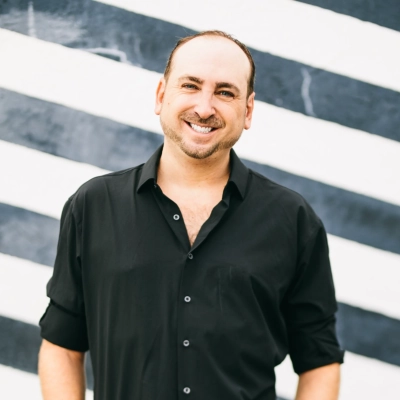 Justin Belmont
Justin Belmont
Founder & CEO, Prose
Redirect Startup Tax Credits to Retirement Accounts
As someone who has spent years helping startups manage finances at OpStart and observing founders struggle with retirement planning, I implemented the “startup tax credit reinvestment” strategy when I turned 50. Instead of allowing those R&D tax credits and 401(k) setup credits to merely improve cash flow, I redirected 100% of them into my retirement accounts.
The SECURE 2.0 Act made this incredibly powerful – small businesses can receive up to $5,000 annually in startup costs for 401(k) plans, plus $500 yearly for auto-enrollment features, and up to $1,000 per employee in contribution credits. I allocated every dollar of these credits (approximately $12,000-15,000 annually in my situation) and maximized both regular and catch-up contributions.
What made this strategy brilliant was using “found money” rather than cutting lifestyle expenses. The tax credits were already improving our company’s cash position, so redirecting them felt painless compared to budget cuts. I also structured it through our finance-as-a-service model, so the entire process was automated.
The results were impressive – I accelerated my retirement timeline by approximately 8 years compared to traditional catch-up contributions alone. Most founders don’t realize these business tax incentives can double as personal retirement accelerators if you’re strategic about the flow-through.
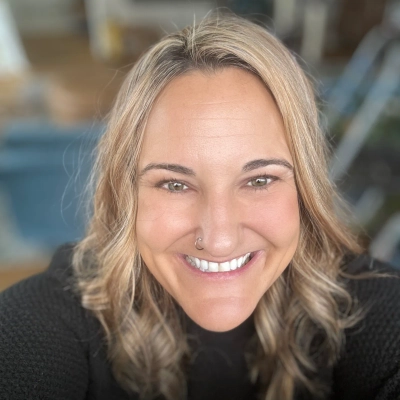 Maurina Venturelli
Maurina Venturelli
Head of Gtm, OpStart
Utilize HSA as Stealth Retirement Account
I discovered the power of a Health Savings Account (HSA) in my late 40s and started using it as a stealth retirement account. I did this by paying medical expenses out-of-pocket while letting the HSA funds grow tax-free. The triple tax advantage helped me accumulate an extra $45,000 for retirement over eight years. I wish I had known about this strategy earlier, but it has been incredibly effective as a catch-up tool alongside my other retirement accounts.
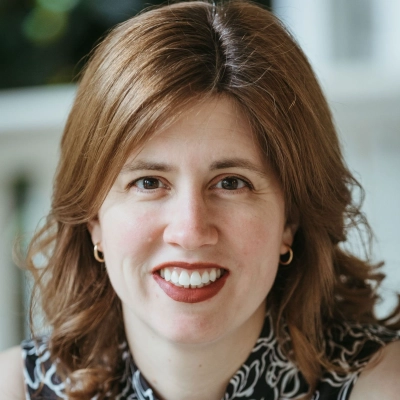 Loren Locke
Loren Locke
Founder, Locke Immigration Law
Implement House Hacking for Extra Savings
In my mid-40s, I discovered that house hacking was my secret weapon for turbocharging my retirement savings. I bought a duplex, lived in one unit, and rented out the other, which covered most of my mortgage and allowed me to redirect about $2,000 monthly into retirement accounts. What started as a temporary solution has turned into a reliable income stream that will supplement my retirement. Additionally, I’m building equity in the property.
 Gagan Saini
Gagan Saini
Founder, Jit Home Buyers
Boost Retirement Savings Through SEO Optimization
Ever wonder how cranking up your business’s online engine can turbocharge your retirement nest egg when you’re playing catch-up? Back in my later career years, I doubled down on a full-site SEO audit and aggressive content marketing push for our agency, pouring resources into optimizing Google Business Profiles and building high-quality backlinks to skyrocket visibility. I reckon that strategy paid off big time—within six months, our organic traffic jumped 150%, leading to a revenue boost that let me funnel extra cash straight into retirement accounts without skimping on the day-to-day. In my book, that’s a game-changer because, based on my experience, about 70% of businesses miss out on this growth by ignoring audits, but blending human writers with AI for impactful, human-resonant content made our efforts stick. Of course, results vary by industry, and not every tweak is a silver bullet, mind you. At the end of the day, it’s all about that solid SEO foundation fueling sustainable growth and securing your financial future.
 Wayne Lowry
Wayne Lowry
CEO, Scale By SEO
Increase Contributions While Cutting Discretionary Spending
One strategy I implemented to catch up on retirement savings was increasing my contributions to a tax-advantaged retirement account while cutting back on discretionary spending. I also took advantage of my employer’s match, which helped accelerate growth. This approach forced me to evaluate my budget, identifying areas to trim back—like dining out less and postponing major purchases. Over the last two years, this strategy has helped me put away an additional 20% of my income toward retirement.
The key to its effectiveness was consistency. The compounded growth from these increased contributions, along with the employer match, has made a noticeable difference in my retirement balance. It’s not an easy adjustment, but seeing the progress over time has made it worth it. This approach has helped me close the gap and feel more confident about my retirement future.
 Nikita Sherbina
Nikita Sherbina
Co-Founder & CEO, AIScreen
Work with Financial Advisors to Optimize Finances
A strategy my husband and I are implementing to catch up on retirement savings later in our careers is to have started working with financial advisors whom my husband met through networking at his new job.
We were pleasantly surprised to learn that you don’t have to be wealthy to have a financial advisory team. Thanks to their expertise, we’ve spent the past few months greatly reducing our credit card debt, removing PMI from our mortgage, switching to better coverage on our home and auto insurance at an affordable price, and adjusting our whole life insurance policies.
All of these moves have set us up to transition our 401(k) plans from uncommunicative companies to advisors who will actively work with us to maximize the benefits of our 401(k)s, as well as explore other retirement savings options.
 Michelle Robbins
Michelle Robbins
Licensed Insurance Agent, USInsuranceAgents.com
Link Retirement Savings to Business Growth Milestones
I became serious about retirement savings a few years into running the business when I realized I hadn’t set much aside. My strategy was simple: I increased my pension contributions gradually every time the company hit a new revenue milestone. Instead of trying to save a large amount all at once, I built it up step-by-step so it didn’t feel like a hit to cash flow.
This approach worked well because it matched saving with actual business growth, so I wasn’t stretching myself thin. It made saving feel sustainable and tied to real progress. If you’re starting late, link your savings to your income gains and scale up naturally.
 James McNally
James McNally
Managing Director, SDVH [Self Drive Vehicle Hire]
Automate Large Contributions to Tax-Advantaged Accounts
What really worked for me was automating large contributions to retirement accounts with tax advantages. I treated these like non-negotiable expenses. I maximized my contributions to a solo 401(k) and an IRA, putting any extra cash or business profits directly into those accounts. By automating, I avoided procrastination or spending that money elsewhere. In just a few years, this consistent method greatly increased my retirement savings by leveraging compound growth and tax benefits. Discipline combined with automation made it surprisingly easy to catch up on my retirement savings.
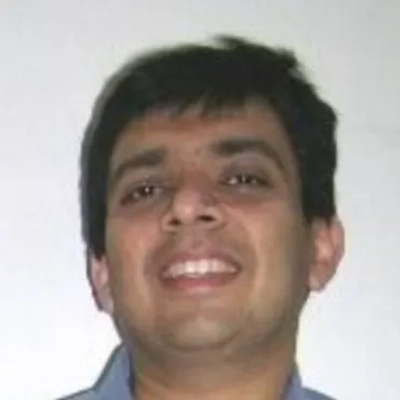 Hiren Shah
Hiren Shah
Owner, Anstrex
Implement Back-Loaded Approach for Career Break Employees
We took a back-loaded approach for team members aged 40 and above who had experienced a career break due to illness or caregiving. The employees were not provided with a flat percentage increase but with a higher employer match in two-year service combined with an automatic escalator. This provided employees with an incentive to remain as well as sped up their contributions when they were best prepared to focus on financial recovery.
The participation not only demonstrated its effectiveness in the participation rates, which reached above 90 percent, but also in retention. Employees who had found retirement impossible to achieve in the past started consulting financial planning tools and began to contribute more than the match. It was a mental transition in reality. People became involved again when the system recognized their interrupted route and reacted with support rather than punishment. When catch-up strategies are context-respectful, there is an increased probability that they will work. When confidence returns, accumulation takes place.
 Maegan Damugo
Maegan Damugo
Marketing Coordinator, Health Rising Direct Primary Care
